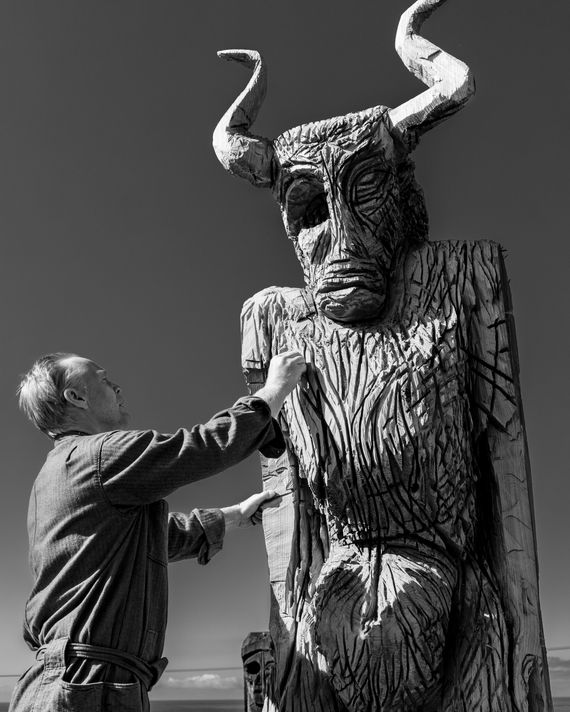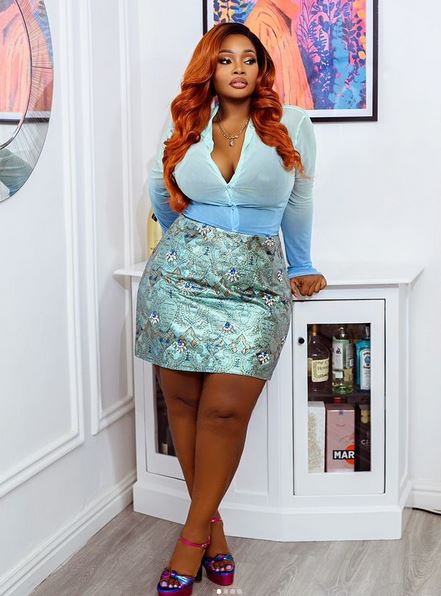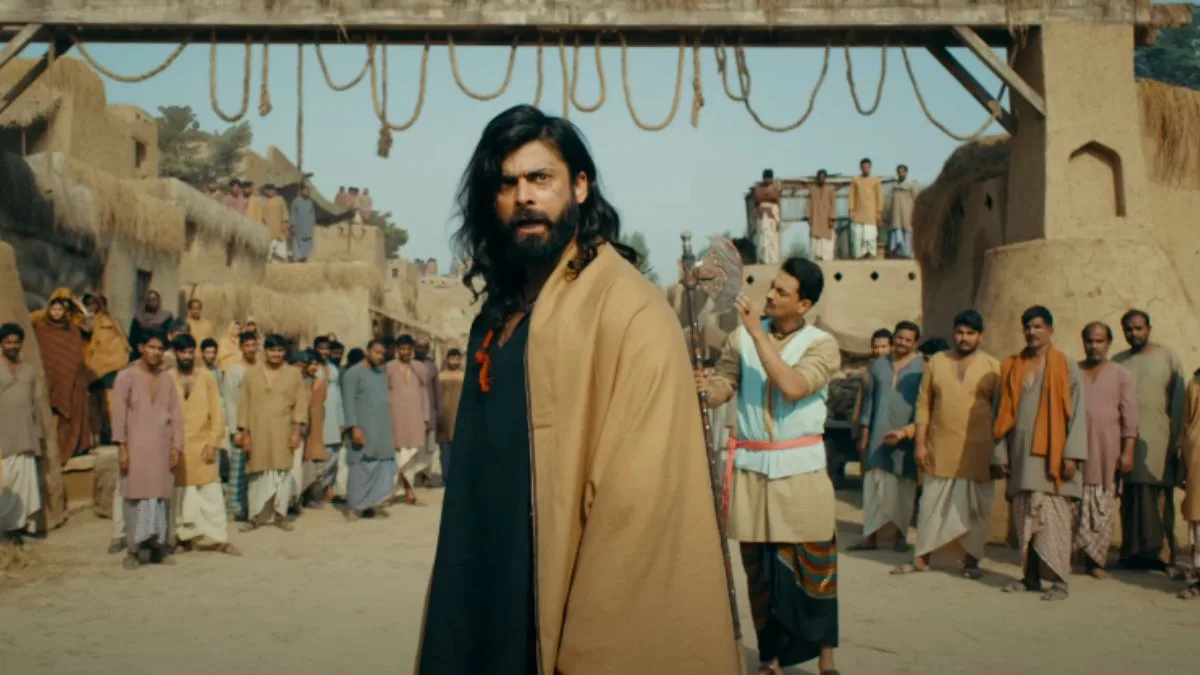
I meet the sculptor Thomas Houseago on a sunny August day at his outdoor studio on an oceanside cliff in Malibu. He arrives late and a little manic, bursting from his car in a mauve sweatshirt and lavender sweatpants, his hair a tuft of yellow blond, rattling off apologies and promising that he is prepared to talk about “everything.” Over the next six hours, he does.
Houseago takes me on a tour of the dozens of giant sculptures he’s made over the past year: redwood owls he carved with a chain saw, an eight-foot-tall plaster-and-wood Minotaur, some kind of Goya-inspired child-eating Cyclops with an erection the size of a sub sandwich. There are also some pleasant domestic still lifes: a sunflower, a coffee pot. In a few days, many of the works would be shipped to New York, where, on September 9, the artist was to open his first solo show in the city in a decade.

It takes up three floors of the Lévy Gorvy Dayan Mansion off Madison Avenue. Houseago, who is 52, has never been an easygoing person and never made easygoing art. “It’s usually men with some unhealed trauma who gravitate to my work,” he says.
Men like him. He grew up poor in Leeds, England. There are tales of drunkenness and drug use, bankruptcy and despair, in his history.
He tried to work it all out in his art. Early on, as an art student, inspired by Chris Burden, he set himself on fire and photographed it. He became a success when his monumental primitivist Baby was a standout at the 2010 Whitney Biennial.
Soon after, he joined two mega-galleries: Hauser & Wirth and Gagosian. This exhibition was originally supposed to appear at Gagosian, but when Houseago visited the 24th Street gallery to plan it out last year, the space filled him with dread. “Walk into Gagosian or Zwirner and tell me, Is that a warm environment? See the people at the desks? You see the terror in their eyes,” he says.
He also felt personally abandoned by Larry Gagosian, who he says hasn’t returned his calls in a decade — ever since he staged a show with Hauser in 2014. Houseago describes the art world in the language of trauma therapy. Gagosian, for example, is a stand-in for his “absent dad.
” He has often found himself thinking, “ I need to talk to Larry; he’s gonna save me. ” Then he remembers, “No, he’s not. He doesn’t give a fuck.
He’s on a boat somewhere.” He had fantasies of physically attacking Andrew Fabricant, who was Gagosian’s COO at the time they discussed doing this show there. “He was talking about art like he owned it,” he says.
“I go very quickly to Leeds, 1976,” when he feels a man is trying to dominate him. “I’m like, I could probably tear your eyeballs out with this pen. ” “He’s a very angry man with a lot of issues, and I wish him well,” Fabricant tells me.
Houseago insists he’s getting better now. His most recent troubles date back to when his father died in mid-2019. He flew from L.
A., where he’d been living since 2003, to Leeds. When he saw the body, he felt first elated, then overcome with rage.
He says he started to unravel after that. On New Year’s Eve, “I beat myself up with a rock,” he says. “I had this, like, demon inside me, and that was the worst, and it’s very primitive how I hurt myself.
” After that, he quit making art while he tried to rebuild himself. He spent 70 days in an Arizona recovery center, undergoing EMDR, somatic healing, and quantitative EEG brain mapping. The people he sought help from decided he had preverbal trauma; through his somatic work, he became convinced that he’d endured sexual abuse as a baby.
His treatment manager had moved him into a place near his own in Malibu. As the lease was running out, Houseago felt desperate to stay — he’d found solace by swimming in the ocean and participating in a men’s support group along with Brad Pitt , an admirer of his work whom he had befriended during the actor’s very public divorce from and custody battle with Angelina Jolie. “His life exploded,” Houseago says.
He sympathized with Pitt’s struggle and, in 2018, “literally took Brad into my shelter — like, he hid in my studio for two years.” (According to Houseago, it was thanks to the support-group work they did that Pitt decided to play an “assassin in recovery” in Bullet Train. ) Houseago wasn’t sure he could afford to stay in Malibu.
Then one pandemic day he ran into his friend Leonardo DiCaprio — whom he now calls his “fairy godbrother” — walking his dogs on the beach. They realized they lived just two houses apart and began hanging out, often discussing art. (DiCaprio is a collector, and his parents, also art enthusiasts, named him after Leonardo da Vinci.
) DiCaprio heard about a house in Malibu whose owner was annoyed with the fussy tenant. DiCaprio, in Houseago’s telling, told the owner, “You should ask him to leave. I’ve got this guy you’re gonna love.
He’s got no money, so you’re gonna have to do, like, half or a third of the rent you’d normally do.” And apparently because it was DiCaprio, they agreed. “He’s got that golden key to everything,” Houseago says.
“Everyone wants to love him.” Houseago now lives there with his two teenage children and brought on DiCaprio’s former assistant as a studio director. “Why am I friends with all these super-fucking-sonically famous people?” he wonders aloud.
Perhaps it’s because they “can drop their armor” with him, he says. He’s interested in the vulnerabilities beneath their “superhero” façades. Today, Pitt, Houseago, and another friend, Flea, have matching green-triangle tattoos.
Houseago says the triangle represents the three poles of trauma healing in his therapist’s model. On a sheet of paper, he draws a green triangle overlapping a red triangle, which in turn represents maladaptive responses to trauma. “We all call each other out because it’s very easy to slip back into this,” he says, tapping his pen on the red triangle.
“There’s a commitment among a group of people, like, ‘Let’s try and take care of each other.’” Besides, these guys are more his speed. “I’d much rather be on a movie set or backstage at a rock concert any day than an art fair or an auction house.
” “You sit and talk to the people at the auction house, and they’re like, ‘I love KAWS,’” he went on. Then, “you go to their homes and you’re like, Oh no, you’re the tastemakers. ” For this show, he reconnected with Dominique Lévy, a dealer he had previously ditched for Gagosian.
She had since co-founded Lévy Gorvy Dayan in the mansion built for the Wildenstein dynasty of art dealers. When Houseago saw it, he knew it was perfect. He and Lévy patched things up.
“I fell in love with him all over again,” Lévy later told me. “There’s nothing more beautiful than a powerful vulnerability and a calm strength. He’s like the samurai.
” “I was able to witness firsthand the process that Thomas took on in creating this body of work,” DiCaprio tells me via his publicist. “Stemming from the reckoning of his past, and his childhood trauma healing, I got to watch his artistry slowly materialize. It was like bearing witness to a man’s metamorphosis from a self-realized Dante’s Inferno.
Even though the work was rooted in an apocalyptic darkness, it simultaneously embraced a rebirth, and a newfound appreciation of the beauty of the entire world around him. He was frenetic, and possessed, pushing himself every day, to be brave enough, to risk purging everything he had to give as an artist.” Houseago’s vision for the show would unfold like his own psychological transformation did, starting with hopelessness on the ground floor — home to the most monstrous creatures, representing abusers from the viewpoint of a child — and moving toward hope at the top floor, where a 113-foot-long tapestry mural of a Malibu sunrise wraps around the walls.
Which isn’t to say he thinks people should buy any of it: “Hey, I’ve got like a half-ton piece of wood here I’ve carved — oh, with a huge erection.” Thank you for subscribing and supporting our journalism . If you prefer to read in print, you can also find this article in the September 9, 2024, issue of New York Magazine.
Want more stories like this one? Subscribe now to support our journalism and get unlimited access to our coverage. If you prefer to read in print, you can also find this article in the September 9, 2024, issue of New York Magazine..














